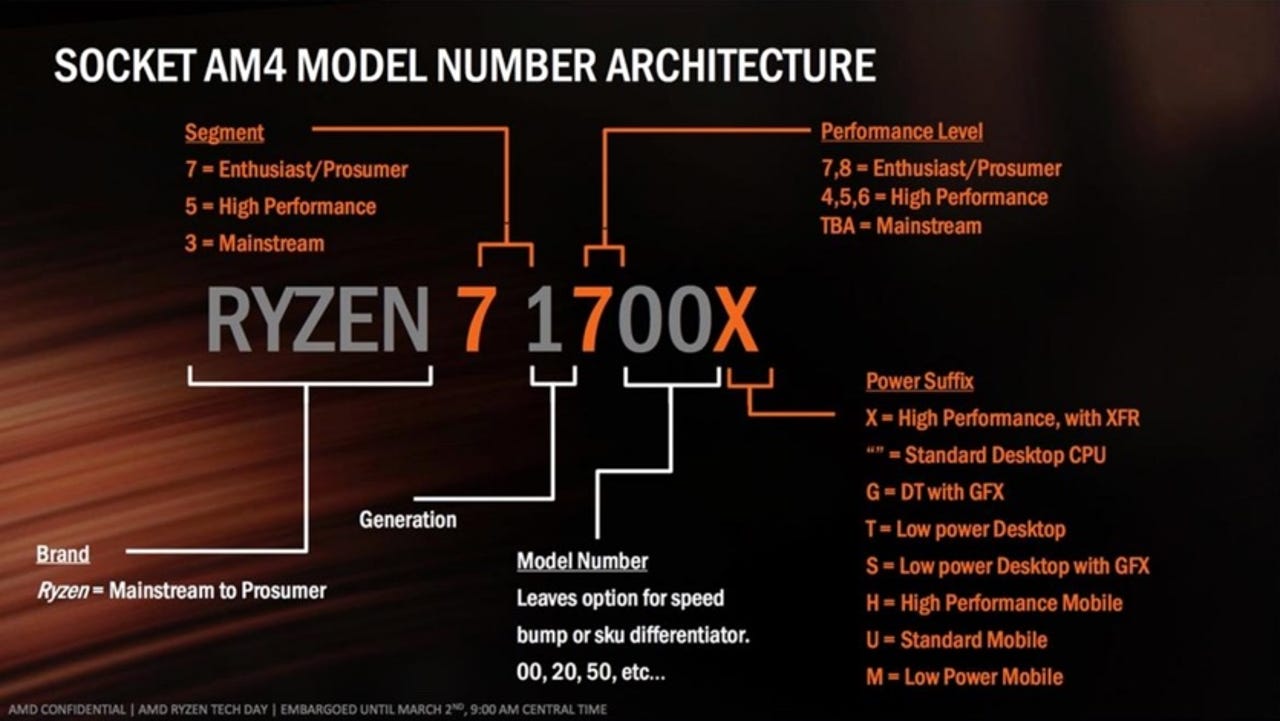AMD Ryzen - One year on, and what a year it has been


March 2017 – Ryzen 7
This is where it all began, with AMD releasing three 8-core/16-thread Ryzen chips - the 3.6 GHz Ryzen 7 1800X, 3.4 GHz Ryzen 7 1700X, and the 3.0 GHz Ryzen 7 1700. These chips, which were priced between $499 and $349, gave Intel chips priced at twice the price a run for their money in benchmark tests and real-world application.
These chips were later followed up by the 6-core/12-thread 3.6GHz Ryzen 7 1600X and the 4-core/8-thread 3.5GHz Ryzen 7 1500X.
April 2017 – Ryzen 5
This is when AMD released the Ryzen 5. In many ways the Ryzen 5 was a much bigger deal than Ryzen 7 because the mainstream processor sub-$300 market is about twice as big as the high-end market processor market, and entry to this allowed AMD to set its sights on the mainstream market where the volume is.
AMD released four Ryzen 5 chips, ranging from the $249 6-core/12-thread Ryzen 5 1600X down to the $169 4-core/8-thread Ryzen 5 1400.
June 2017 – Ryzen PRO
Here AMD too aim at the professional market. The Ryzen PRO was the first processor to offer up to 8-cores/16 threads for commercial-grade PCs, and enabled up to 62 percent more multi-threaded performance on the Ryzen 7 PRO 1700 than other chips.
Ryzen PRO chips feature up to 8-cores/16-threads, up to 3.7 GHz Precision Boost clock speed, up to 20MB of L2+L3 low-latency cache, and featured AMD SenseMI technology. The chips also featured a built-in 128-bit AES encryption engine, and support for Secure Memory Encryption and Secure Boot.
July 2017 – Ryzen 3
Here AMD rounded off the Ryzen desktop processors lineup with the release of Ryzen 3, chips that targeted the mainstream desktop market.
Two chips were released:
Two Ryzen 3 chips have been announced today:
- Ryzen 3 1300X: 4-core, 4-thread, 3.5 GHz / 3.7 GHz, 8MB L2 cache, RRP $129
- Ryzen 3 1200: 4-core, 4-threads, 3.1 GHz / 3.4 GHz, 8MB L2 cache, RRP $109
For anyone looking for an overclockable, quad-core processor for under $150, the Ryzen 3 was the obvious choice of silicon.
August 2017 – Threadripper
A few months following the release of the Ryzen 7, AMD was at it again, this time with Threadripper high-end desktop processors.
- Ryzen Threadripper 1950X: 16-Core, 32-Thread, 3.4/4.0 GHz, $999
- Ryzen Threadripper 1920X: 12-Core, 24-Thread, 3.5/4.0 GHz, $799
- Ryzen Threadripper 1900X: 8-Core, 16-Thread, 3.8/4.0 GHz, $549
Thee processors continued to put a price squeeze on Intel. The Ryzen Threadripper 1950X cost $700 less than the equivalent Intel Core i9-7960X chip, and a whopping thousand dollars less than 18-core/36-thread Core i9-7980XE.
October 2017 – Ryzen Mobile processors with Radeon Vega Graphics
AMD Ryzen mobile processors are the fastest processor for ultrathin notebooks, with up to 44 percent more multi-threaded CPU performance and up to 161 percent more graphics performance than the competition.
- Up to three times the CPU performance
- Up to 2.3X the GPU performance
- Up to 58 percent less power consumption
February 2018 – Ryzen desktop APUs with Radeon Vega graphics
AMD's unveiling of the Ryzen 3 2200G and Ryzen 5 2400G, both featuring built-in Radeon Vega graphics, will be the catalyst needed to shake up the entry-level and mid-range desktop PC market.
With some 30 percent of desktop PCs not shipping with a discrete graphics cards, these APUs - priced between $99 and $149 - bring a lot to the table.
The future
AMD isn't sitting still, and will use 2018 to move Ryzen forward on many fronts:
- Second-generation Ryzen CPUs featuring AMD's first 12nm "Zen+" architecture are on the way, landing in April
- Ryzen PRO Mobile, designed for high-performance, premium commercial notebooks, is slated for Q2
- Second-generation Ryzen Threadripper chips are are slated for the second half of 2018